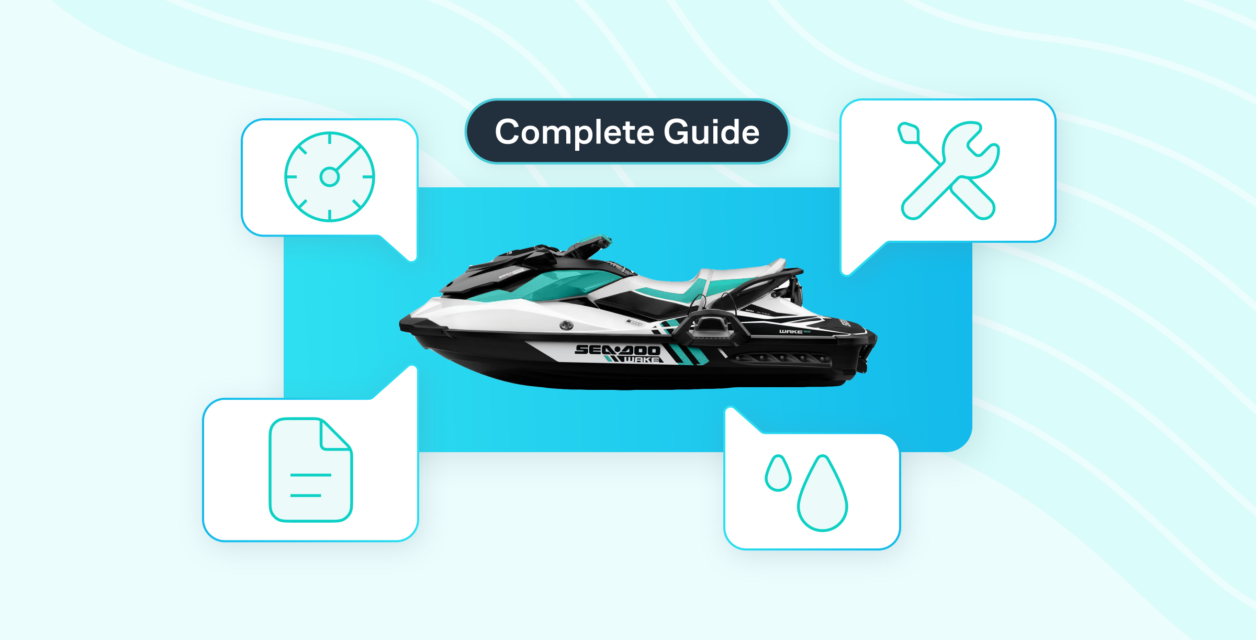2021 Season is just around the corner, which means that if you took some time off during this winter from the operations, now is the perfect time to check on your Jet Skis or WaveRunners. If you live in the colder regions where the temperature gets below freezing, you will find this blog especially helpful. Herewith, we present our complete guide on de-winterizing your jet skis in 5 steps and preparing them to hit the waves in the new rental season!
Step 1: Understand What Jet Ski De-Winterization Means

The de-winterizing procedure is when you make sure your equipment is ready for the new season. Before starting the engine, we highly recommend following these steps to see if any problem comes up along the way. Also, we encourage you to do your own research in more depth if you encounter any issues that need more detailed investigation or, better yet, get it to the service center. The information written here should serve as a starting point, but hopefully the ending too. For now, get yourself a nice rag, and let’s jump straight into it.
Step 2: Inspection
Your jet ski spent a fair amount of time in storage, so it needs to be properly inspected. During the process, check for the following things:
- Cracks
- Thin
- Moisture
- Lubrication
- Rusk (Corrosion at worse stages)
If you still have your vessel manual flying somewhere around, this is when it will become handy. Read it and see if your manufacturer provides any specific directions for your water sports equipment. Once you finish skimming it, take a look at the additional tips we provide down below. We suggest following them in the order of their mention.
Change the Oil Filter
If you had not replaced your oil filter when you were winterizing the equipment, we suggest doing it now. When replacing the oil filter, it is critical to make sure that the oil line lacks air bubbles. Bubbles may have a harmless effect if they pass through the small injection lines. However, if there is a big one at the pump, this is when you want to investigate further. It is because you can lose prime and can cause your jet ski to fail. The manipulations with the oil filter should help trap the air out, causing the issue. If it does not, we suggest talking to the mechanic.
Drain Antifreeze Residuals
Just like you would add the antifreeze when prepping your equipment for the winter storage, this is when you want to make sure that you remove the residuals. Take a look at the video below on how to exhaust flush it for Sea-Doo:
Battery Maintenance
If you did not take out the battery during the winter and left it inside your WaveRunner, it likely became out of charge during hibernation. If that is the case, do not charge it inside the equipment, as it might be why your jet ski won’t start. Inspecting it for corrosion should also be considered part of daily maintenance to keep it lasting for years, not only after winter storage.
Give your battery a full charge. For lead-acid wet battery type, ensure that water levels are appropriate. With the help of a battery tester, check the amps and volts. If it is charged and you still got no luck, this might indicate a need for a new one.
Check on Hull Plugs and Spark Plugs
When you were winterizing your jet ski, you likely pulled hull plugs for trapping water out. What you want to do now is to reinsert them so that your equipment does not sink. To check the conditions of spark plugs, first, clear out the fogging oil and flush them.
If you notice that either of your plugs are not in their best condition, it is time to replace them to avoid leakages and sinking. As a rule of thumb, it is always good to start a new rental season with a new pair of plugs anyway. Just make sure you’ve got the right PWC plugs matching your WaveRunner engine.
Exhaust the Cooling System
If you are located in freezing climates, it was a good idea to drain the cooling lines for winterization. Also, this is another part of your jet ski that should be treated with a flush of running water. Ensure the exhaust is fully clear to avoid engine problems (e.g., overheating).
Grease the Driveshaft
To get the proper free rotation throughout the season, you will want to grease the driveshaft. Also, if you operate in ocean waters, this will help ensure that your drive shaft does not get rust. If you ride saltwater, we recommend removing the impeller and antiseize the prop shaft.
Step 3: Washing and Cleaning
Once you are done checking on jet ski conditions, you must give it a thorough washing and cleaning. While there are no specific guidelines for doing it after winterization vs. any other times, it would not hurt to shine your WaveRunner up after each use. The video down below shows the step-by-step approach for deep washing:
Notice that video authors split the process into the following steps:
1) Rinse Jet Ski
2) Rinse Trailer
3) Wash Jet Ski
4) Rinse Jet Ski Engine Bay
5) Drain Jet Ski Hull
6) Flush Jet Ski Engine
7) Jet Ski Rust Protection
8) Correct Jet Ski Storage
Step 4: Start the Engine
Just like you’d help your customer with it, see if it is ready for renting by checking the engine. You should take it as one of the final indications for the equipment readiness for a new season. If they did not start, see if our separate guide to help with jet ski starting issues can solve the problem before taking them to the mechanic.
Step 5: Final Checklist for Jet Ski Readiness for a New Season
Some of the other final small things that we suggest referring to as your final checklist consists of the following:
- VFH Radio functions.
- Life Jackets did not rip and do get inflated.
- Horn works.
- Trim examined.
- Anchor is present.
- Fire extinguisher is full and did not expire.
- Fuel is in the tank.
- Minor problems (e.g., rust, cracks, etc.) are fixed or removed.
Don’t Make Your Final Stop Here and Continue Your Research!
As we have already mentioned, this guide should serve as a starting point only. To that end, we also recommend you check out the following sources:
- Check your manual guidelines for additional instructions
- Speak to marina management and see if they can offer any support
- Ask friends and colleagues running the same business for extra pieces of advice
- Check out the websites like jetdrift who write many articles discussing PWC’s
- Share your comments down below and follow us on social media for other pro tips
Want to know more?
WaveRez isn’t just reservation software. We are a team of experienced individuals with backgrounds in tourism and the watersport industry. We believe in helping your business grow alongside providing a watersport-focused reservation system.
If you’re looking to expand your equipment variety and need help keeping up with a larger fleet of equipment, we’d be happy to help. Our matrix view provides watersport companies the ability to see all of their equipment availability in one easy-to-view page. You can check out more on our WaveRez feature page.
u
t
o



